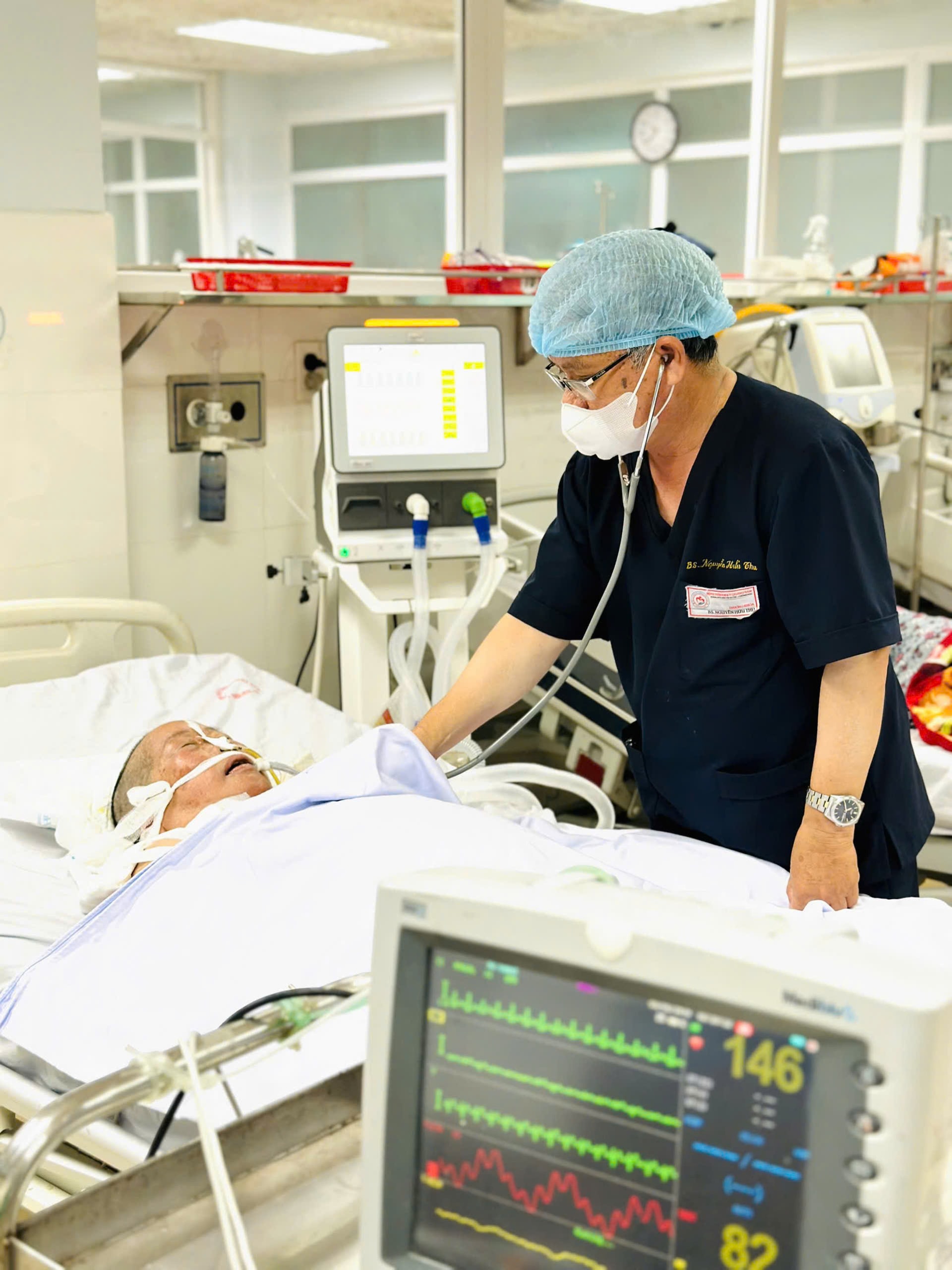
Proactively move the patient.
Mr. Nguyen Tai, Director of Quang Nam Regional General Hospital (Dien Ban Ward), said that on the afternoon of October 27th, upon receiving flood forecasts, the hospital requested all patients and their families being treated in the wards on the first floor to move to the wards on the second floor.
In addition, doctors and nurses at the hospital proactively moved computers and medical equipment used for examinations and treatments from the first floor. All fixed equipment was initially placed on the second floor.
By noon yesterday (October 28), Dien Ban Regional General Hospital was still flooded to a depth of over 1 meter. Approximately 1,200 patients and their family members are being provided with food and accommodation at the hospital.
“Regarding the supply of medicine and equipment at the hospital, it is basically stable because we anticipated a prolonged flooding situation. However, we have to mobilize and appeal for additional support from organizations for food supplies for patients because there are still many inpatients. Yesterday afternoon, charitable organizations in Dien Ban Bac ward managed to send sticky rice cakes and other traditional Vietnamese rice cakes to the patients,” said Mr. Nguyen Tai.
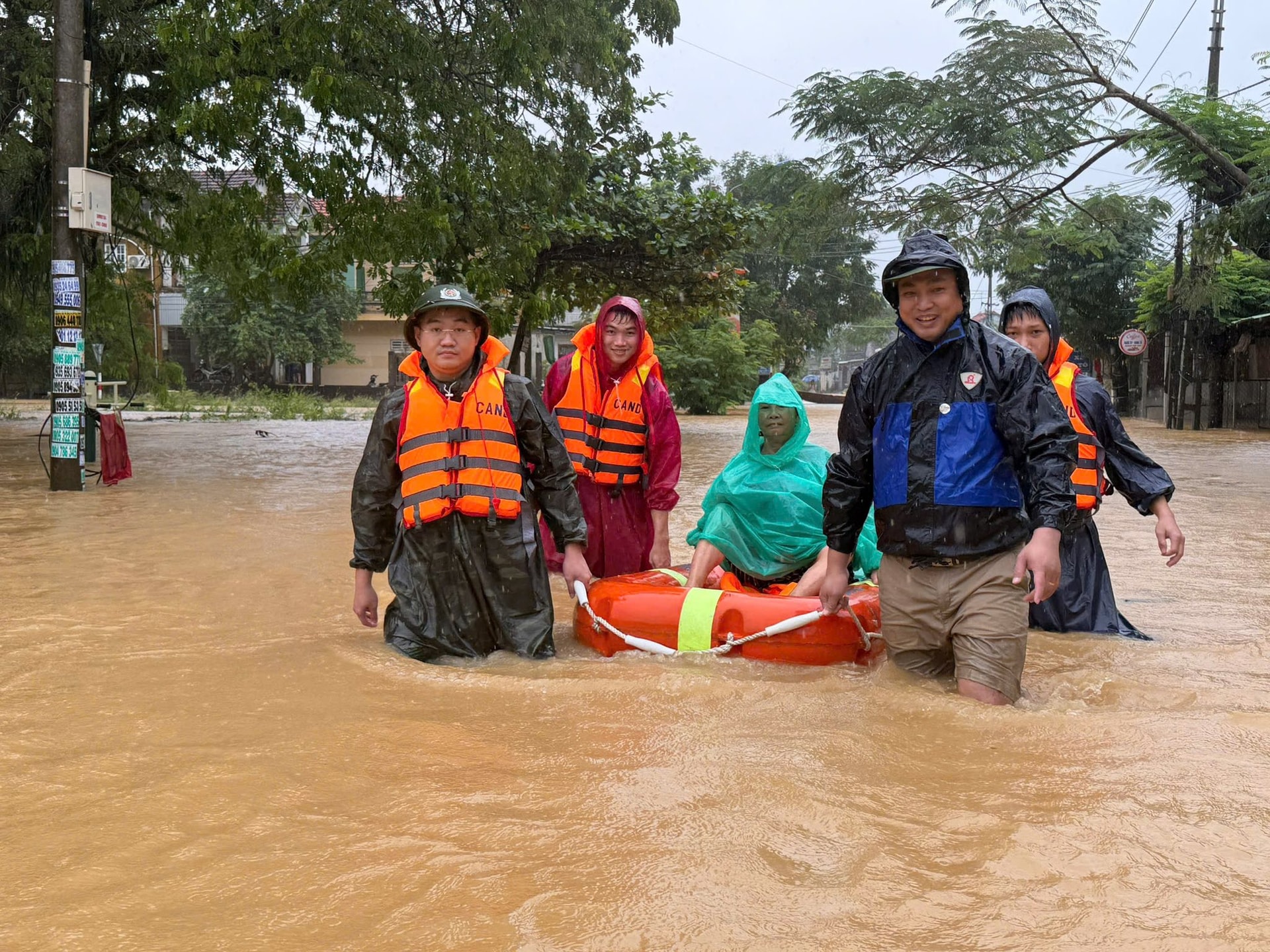
For provincial-level medical facilities, organizing emergency and treatment departments/units to accommodate a large number of patients in a short period of time requires proactive preparation from the outset. Dr. Nguyen Tai added that a common situation is a shortage of fuel reserves to operate equipment, therefore a generator with sufficient capacity for the ICU, a certified backup oxygen system, and a mechanism for rapid replenishment from nearby sources are necessary.
At the Northern Mountain Region General Hospital, during a night of heavy rain, many dialysis patients were unable to go home. The on-call team stayed for 48 hours to keep the equipment running and to support patients with kidney failure, cardiovascular disease, and diabetes.
Meanwhile, at Tam Tri Quang Nam General Hospital (Duy Xuyen commune), the number of emergency patients on October 27th due to accidents during the floods reached over 10 cases. Dr. Vo Van Chinh, the hospital director, said that on the morning of October 28th, the hospital sought ways to secure fuel supplies to ensure the basic operation of equipment. Approximately 127 inpatients received free meals from the hospital.
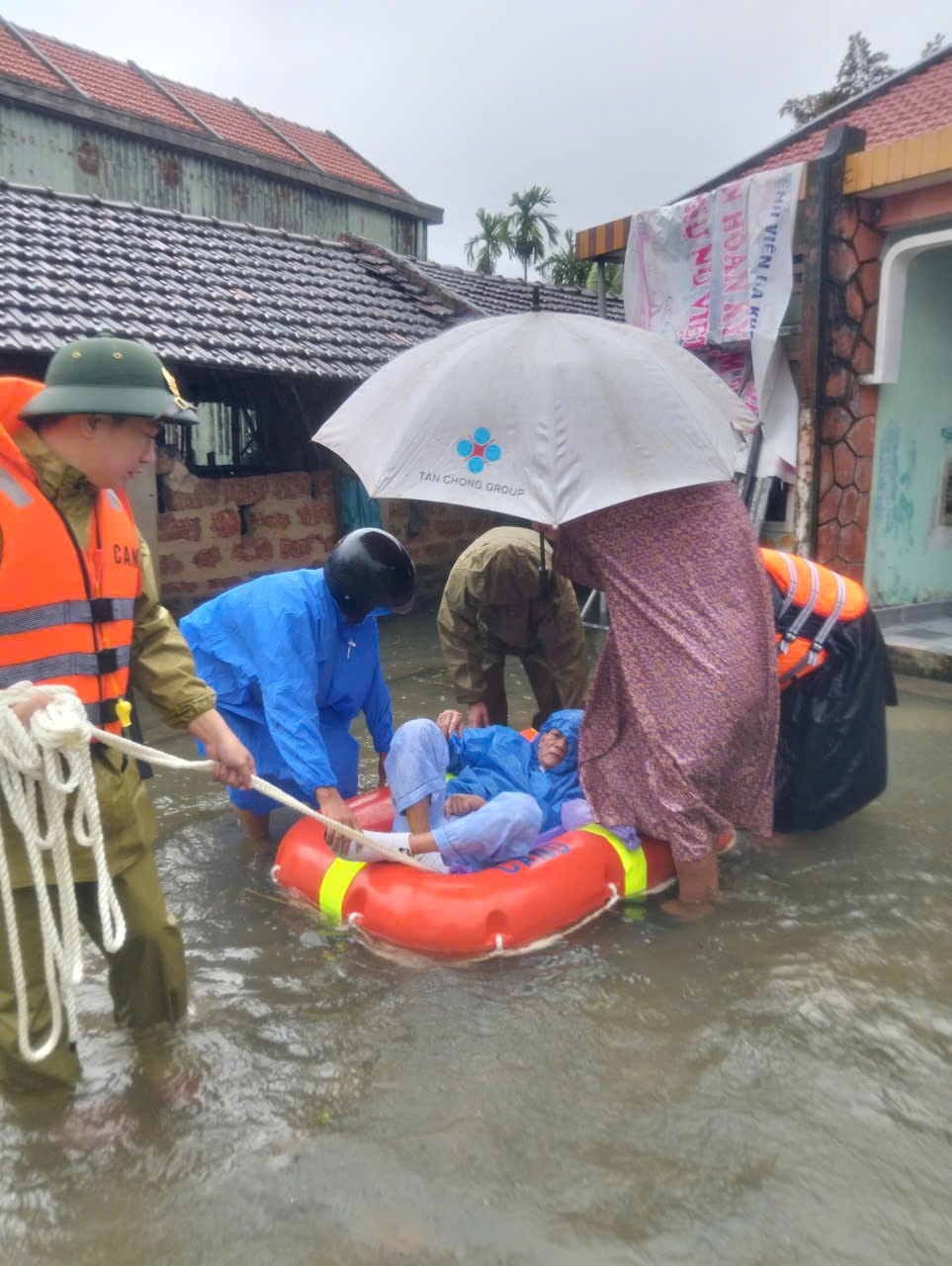
Efforts made under challenging conditions
At many regional health centers, when floodwaters rise rapidly, these facilities become safe havens for dozens of households. Healthcare workers provide emergency care and assist residents with food and shelter.
Dr. Tran Do Nhan, Director of the Duy Xuyen Regional Medical Center, said that the emergency system at the center operates 24/7. On the night of October 27th, residents in low-lying areas were provided shelter on the second floor of the center.
In mountainous areas, where transportation is currently disrupted, medical facilities are forced to improvise, utilizing existing reserves, dividing remaining medication into smaller quantities, and prioritizing emergency cases and severe chronic illnesses. In the mountainous areas of Nam Giang and Dong Giang, medical teams are also collaborating with local militia to support the people.
Dr. Tran Van Thu, Director of the Nam Tra My Regional Health Center, said that currently, providing emergency care to patients in the area is difficult due to road blockages, preventing ambulances from passing through. In addition, transferring seriously ill patients to other hospitals is also challenging due to landslides on the roads.
“On October 27th, we had to transfer two patients to Quang Nam General Hospital, but it was very difficult, involving winding roads to get them there. Not to mention the difficulties faced by emergency cases in areas that are cut off,” said Mr. Tran Van Thu.
Currently, localities are still struggling to find ways to operate vehicles, medicines, and essential supplies in emergency situations. In particular, for medical facilities, the shortage of fuel to operate machinery is a major concern for many units if the flooding continues.
Furthermore, the increased risk of chronic diseases and outbreaks of infectious diseases due to environmental pollution after each flood is a major concern for the healthcare sector.
Coordinate emergency response in critical cases.
Along with local authorities, many volunteer groups have coordinated to help transport many sick people to medical facilities.
Specifically, on the afternoon of October 27th, a resident of Vinh Trinh village, Thu Bon commune, suffered severe abdominal pain suspected to be appendicitis. However, due to rising floodwaters and many roads being cut off, the family was unable to travel on their own. Upon receiving a distress call on social media, the commune's military forces and volunteers mobilized canoes to reach the patient, transporting them across the deep floodwaters to the Northern Mountain Region General Hospital for treatment. The patient is currently receiving stable treatment at the hospital.
Source: https://baodanang.vn/no-luc-cap-cuu-dieu-tri-nguoi-benh-trong-lu-lut-3308585.html



![[Photo] Prime Minister Pham Minh Chinh receives the Governor of Tochigi Province (Japan)](/_next/image?url=https%3A%2F%2Fvphoto.vietnam.vn%2Fthumb%2F1200x675%2Fvietnam%2Fresource%2FIMAGE%2F2025%2F12%2F16%2F1765892133176_dsc-8082-6425-jpg.webp&w=3840&q=75)
![[Live] 2025 Community Action Awards Gala](/_next/image?url=https%3A%2F%2Fvphoto.vietnam.vn%2Fthumb%2F1200x675%2Fvietnam%2Fresource%2FIMAGE%2F2025%2F12%2F16%2F1765899631650_ndo_tr_z7334013144784-9f9fe10a6d63584c85aff40f2957c250-jpg.webp&w=3840&q=75)

![[Photo] Prime Minister Pham Minh Chinh receives Lao Minister of Education and Sports Thongsalith Mangnormek](/_next/image?url=https%3A%2F%2Fvphoto.vietnam.vn%2Fthumb%2F1200x675%2Fvietnam%2Fresource%2FIMAGE%2F2025%2F12%2F16%2F1765876834721_dsc-7519-jpg.webp&w=3840&q=75)
![[Image] Leaked images ahead of the 2025 Community Action Awards gala.](/_next/image?url=https%3A%2F%2Fvphoto.vietnam.vn%2Fthumb%2F1200x675%2Fvietnam%2Fresource%2FIMAGE%2F2025%2F12%2F16%2F1765882828720_ndo_br_thiet-ke-chua-co-ten-45-png.webp&w=3840&q=75)


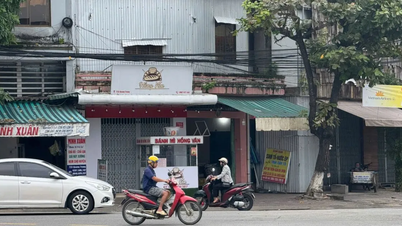




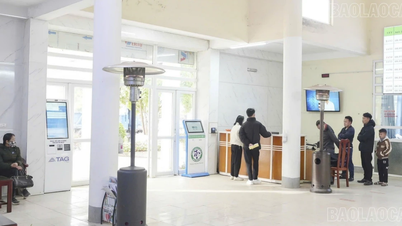

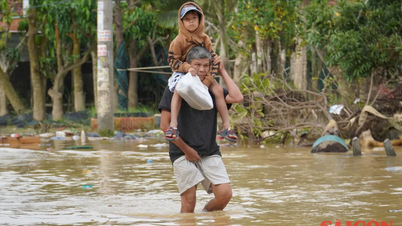











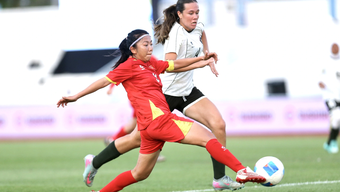











































![[Photo] Prime Minister Pham Minh Chinh attends the Vietnam Economic Forum 2025](https://vphoto.vietnam.vn/thumb/402x226/vietnam/resource/IMAGE/2025/12/16/1765893035503_ndo_br_dsc-8043-jpg.webp)




























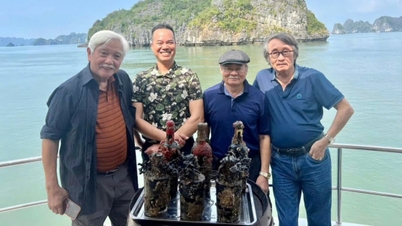


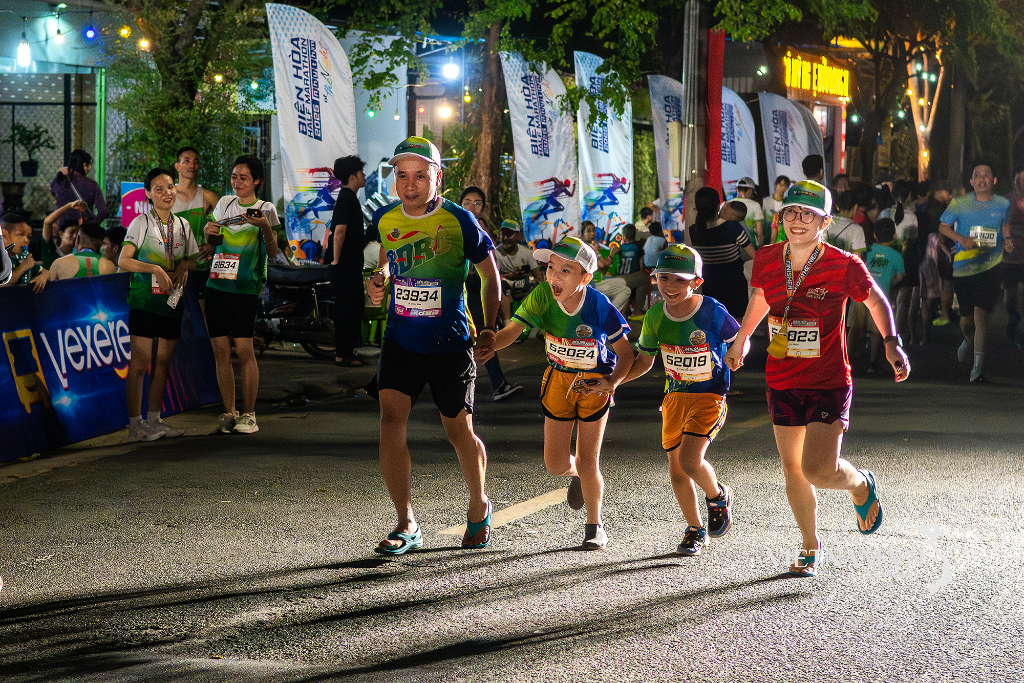


Comment (0)